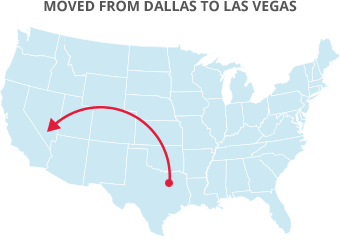

 By Julie DeLong, A-1 Freeman Moving Group
By Julie DeLong, A-1 Freeman Moving Group
First, a note about hurricanes. A hurricane is also a humongous thunderstorm, with strong lightning possibilities. Currently, there are several churnings through the waters in the southern US that range from minor nuisances to cataclysmic and will impact a fair amount of the country. If your move is scheduled for a time or place that coincides with the possibility of a tropical storm or hurricane, postpone it. A professional moving company won't risk their people and equipment, but if you're the DIY type just reschedule. Forecasting these days is sophisticated enough that you're aware of impending storms weeks out, so plan accordingly.
Here's how to manage your move during bad winter weather.
First, make sure your houses are prepared. The power and water should be on at your new house, so you can get ready for the move-in if your new house is in the path of the weather. Ask your realtor to check that there's a water faucet on somewhere to keep the pipes from freezing, and that the thermostat is set to at least 55 degrees--nobody wants to come home to a burst pipe. If you're moving long distance, hire someone to clear the driveway and salt the walkways so you can get into the house safely. For a local move, send a teenager or your regular snow removal source over to do the clearing after your old house is done.
Cover the entry with old blankets or towels to keep the slipperiness of tile or wood floors to a minimum as well as mitigate mud, salt, and snow tracking in the house.
Professional movers know how to pack and prep your belongings so that they aren't damaged in bad weather. You should expect to see a lot of moving blankets and plastic wrap. Some fragile things--art, china, or electronics--are sensitive to temperature, so if you've packed these items yourself ask the movers to confirm that those things are properly insulated against the cold.
Ask the movers to verify that there are no leaky spots in the truck--it's a small possibility but one that everybody wants to avoid.
It's going to be a long, and frankly, a miserable day if you're moving in the rain or snow. Get out your camping gear--waterproof boots, tarps, extra socks, ponchos, and rain jackets--or your snow stuff--ski pants, gloves, hats, and hand warmers--and have some dry clothes handy for the drive. It's important that you layer--as you start moving you'll get warm and you don't want to overheat.
If you're driving to the new house, have your cars serviced before moving day. A full tank of gas is a given, but have your mechanic check out the tires and under the hood before you go. Yes, you have AAA, but don't think you're going to be the only motorist in distress that day.
Plan a second route to your new house--if secondary roads are the best choice on a clear and dry day, the same won't necessarily be true during a winter storm. Stick to primary roads--interstates and major highways--since you can be assured those will be cleared and salted regularly to avoid ice buildup.
The most important thing to prepare for is the possibility that your move might stop midway—if conditions deteriorate to the point it's not safe to drive. Go ahead and make hotel reservations for a night or two at home and in route as soon as you get the nasty forecast (don't forget to include your pets); you can always cancel if you need to.
There are many clear benefits of hiring a professional moving company, but it's the intangibles that matter most. When you use seasoned pros, they can guide your move through bad weather with experience and care.
Request a free quote

